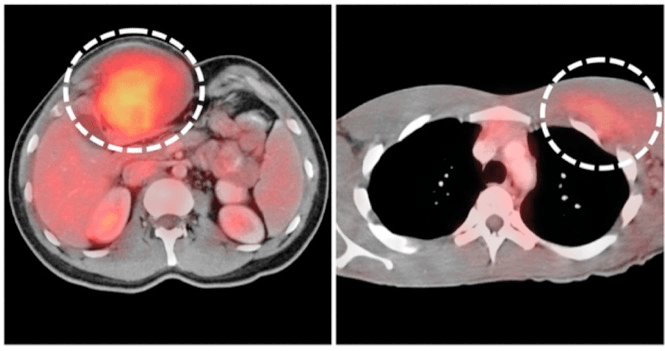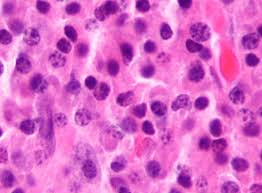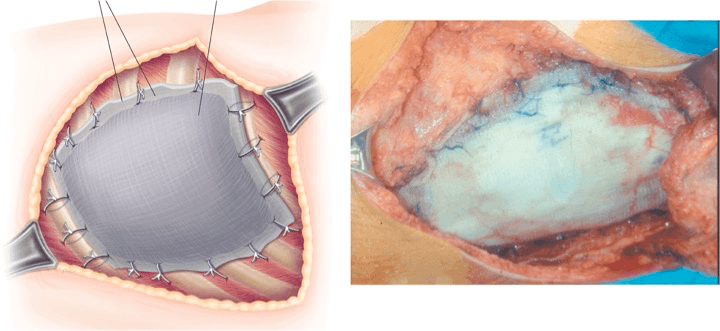Pain is more likely to be associated with this type of process (unlike in many other instances)
Malignant
A pulsating sternal mass requires this prior to surgical intervention.
Imaging (CTA vs angiography)
Most common malignant chest wall tumor
Metastatic disease to the ribs
Name a flap that can be used to help reconstruct the chest wall after resection
(100 per flap)
Latissimus dorsi
Serratus anterior
Rectus abdominis
Pectus major
External oblique

1 - 3%
What percentage of chest wall masses are malignant?
60%
(most of these do NOT originate from chest wall structures)
This tumor presents as a rapidly enlarging mass with sunburst pattern on chest radiography.
Osteosarcoma (osteogenic sarcoma)
Most common primary malignant tumor of the chest wall.
Chondrosarcoma
Desmoid tumors may invade adjacent structures and have a high tendency for recurrence, therefore surgical resection with THIS margin is recommended.
2 - 4cm (reading)
(NCCN)
R0 - no tumor cells present
R1 - microscopically positive margin
R2 - macroscopically positive margin

Methods of tissue diagnosis for chest wall masses
(Bonus 200 for naming 4)
FNA (not great)
Core Needle Bx (better)
Excisional Bx (for <3cm)
Incisional Bx (for >3cm)
Where do most bony chest wall tumors arise?
Ribs
(85%)
Eosinophilic granuloma is the benign component of this malignant process
Malignant fibrous histiocytosis
This tumor creates a fusiform expansion of the posterior aspect of the rib with soap bubble, or ground glass appearance
Fibrous dysplasia
(MC benign lesion of rib)
Which non-rigid meshes are typically used in chest wall reconstruction? (3)
polypropylene
polytetrafluoroethylene
polyglactin 910
Though benign, local recurrence following resection is common in this type of chest wall mass.

Desmoid (aggressive fibromatosis)
This must be considered within the differential of chest wall infections following trauma, particularly in immunocompromised patients.
fungal osteomyelitis and chondrochondritis
This uncommon chest wall mass progresses to multiple myelome in approximately 50% of patients within 2 years of radiation treatment.
Solitary plasmacytoma

This benign tumor presents as a mass originating from the cortex of the rib, essentially a hamartoma of the growth plate.
Osteochondroma
The margin recommended for resection of malignant chest wall tumors with lowest risk of recurrence
4 - 5cm
(1 rib above, 1 rib below)

This rigid prosthesis has been found to improve post-operative pulmonary function when used in chest wall reconstruction.
methyl methacrylate sandwich
(methyl methacrylate between 2 layers of prolene mesh)
Avoidance of radiation following complete resection of Ewing Sarcoma can be important due to radiation-induced malignancy in this rate of patients.
10-30%
These two attributes were found to be independent prognostic factors for disease-free survival in soft tissue sarcoma patients
(must list both)
Tumor grade
Type of resection (R0 vs not)
Neoadjuvant chemotherapy is often given for high grade lesions including (Name 3 conditions listed)
Ewing Sarcoma
Osteosarcoma
Rhabdomyosarcoma
Titanium implants have this advantage when used in young patients
flexibility allows stretch as pt grows

This man and the mutation.
Ewing
Mutation: t(11;22)(q24;q12)